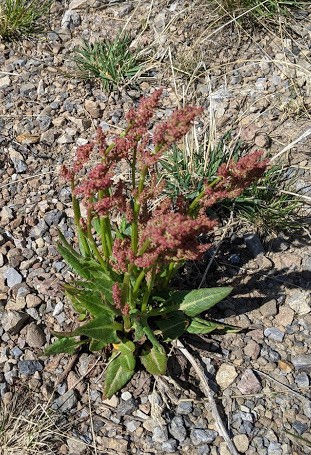Book Review: When the Earth Was Green
- susan5383
- Aug 10
- 4 min read
Updated: Aug 12
By Patsy Cotterill
When the Earth Was Green: Plants, Animals and Evolution's Greatest Romance, by Riley Black, 2025. New York, N.Y., St. Martin’s Press.
History is the key to understanding the present; it also provides the perspective for the future. Interestingly, though, in the case of the geological record, the present is also a key to the past.
I borrowed this book from the library after hearing an interview with Riley Black on CBC radio, hoping to get a better grasp of the geological time sequence and its possible relevance to today. It was not entirely what I expected. Admittedly, as a work of popular science it should not present a textbook-like chronology (as far as the gaps in the geological record will allow) of the succession of life on Earth. Rather, the chapters that form the core of the book are a series of vignettes highlighting the relationships between plants, animals, and the Earth’s climate that were prominent at a specific geological time and place chosen by the author, as suggested by the geological record. The chapters cover intervals of millions of years from 1.2 billion years ago in what is now Arctic Canada to 15,000 years ago in present-day New York State. Although the actors in these pre-historical dramas are unfamiliar to us, in fact the relationships and adaptations they illustrate are recognizable in the present day, not to mention that some of the most enduring creatures are still with us in one form or another. The author states: “The selected vignettes represent significant moments in the long relationships between plants and animals. Some of these moments were small shifts with enormous implications such as when plants pumped oxygen into the air or the spread of grassland into a cooler, drier, global climate.”

One example of a vignette is the chapter entitled “A sticky situation”, set 100 million years ago in what is now Myanmar, which describes how a mosquito is blown into and gets stuck in a blob of resin – resin produced in copious amounts by the Cretaceous conifers of the time as a defence against dinosaurs. Black traces a putative trajectory for the insect from the moment of its capture in resin to a recognized fossil found in amber - hardened resin - today.
Black draws her information for her creative vignette scenes from the scientific literature (documented in eight pages of references), her visits to museums and quarries and her own field experience. The vignette format allows her to imagine details of everyday plant-animal interactions that would not be permissible if written in textbook style. Her writing is lyrical in tone, and peppered with simile and metaphor to promote understanding.
The second part of the book includes 65 pages of appendices. Comparable somewhat to footnotes, but easier to read in a more straightforward, factual text style, they explain and expand on the chapters and supply some fascinating details (such as the functions of lignin or the consequences for life of an excess of oxygen) as well as provide the rationale for the author’s choice of vignettes. I recommend reading the appendix to each chapter at the same time as the relevant chapter to fill in details and enhance understanding.
While a set of colour plates would have helped visualize these ancient organisms, I presume their inclusion would have proved too expensive for this popular science book. As it is, Kory Bing’s grey tone illustrations are helpful in providing visual clues.
The book includes some socio-political commentary, including in an appendix a reference to the harmful trade in amber in Myanmar. Hence, in a book citing extinctions, I find it surprising that she does not mention the Anthropocene, the age of the human-caused species extinctions, and speculate on the significance that this might have for the future.

I accept that the geological record can likely provide no evidence of the biochemical processes that underpin life, but still, I should have liked some reference to the “primordial soup” and the origin of life. I was curious as to how animals lived prior to the emergence of green plants and photosynthesis. Apparently, the answer lies in chemosynthesis, bacteria using methane and hydrogen sulphide from deep-sea vents to produce organic matter, thousands of millions of years before animal life evolved.
I did relate to one comment Black made. Paleontologists may regret the huge gaps that exist in the geological record – notwithstanding how astonishingly much has been pieced together from happenstance and careful study over the centuries. However, she points out that it is these discontinuities in the record that enable discrete species to be recognized: a continuous record of evolution would make it difficult to draw the line between where one species ends and another begins. This reminded me of my taxonomic botany days when we spent an inordinate and boring amount of time trying to figure out what constitutes a species. Even today I find myself wondering why a decision to separate two species was made when they only differ quantitatively on a narrow range of measurements, or why a variety or subspecies has suddenly been elevated to species status.
Overall, the book is worth reading because it sheds light on a subject most of us know little about, despite all the sensationalist movies in the "Jurassic Park" style: namely the geological past. However, it has contemporary relevance in that it demonstrates that plants and animals must always be adapted to their environment and to each other in order to thrive. It also reminds us of a sobering thought: our present environment will not last forever but is just one scene in a constantly changing planetary drama.


